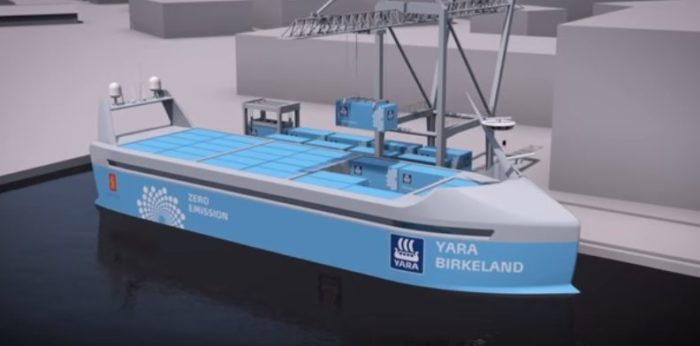Technology disruption is becoming a reality and autonomous vessels are getting more and more attention. Around the world, significant milestones continue to be reached. However, legal, safety and cyber security issues are likely to limit the growth of autonomous vessels for the foreseeable future.
According to Allianz’s Safety and Shipping Review, widespread use of autonomous shipping is currently far from becoming a reality. In fact, fully automated ships may not even be possible or desirable on major congested shipping routes, believes Volker Dierks, Head of Marine Hull
Underwriting, AGCS Central & Eastern Europe.
[smlsubform prepend=”GET THE SAFETY4SEA IN YOUR INBOX!” showname=false emailtxt=”” emailholder=”Enter your email address” showsubmit=true submittxt=”Submit” jsthanks=false thankyou=”Thank you for subscribing to our mailing list”]
However autonomous vessels are being developed for use under controlled conditions. Next year, Kongsberg Gruppen will begin testing a fully-electric 120 TEU autonomous ship, Yara Birkeland. China is also investing in autonomous shipping and established a test site for unmanned vessels in Guangdong. In addition, the MPA Singapore will introduce autonomous harbour ships in future for a number of operations, such as berthing, mooring and towing. Lastly, in Europe, there are plans to introduce autonomous electric container barges operating from the ports of Antwerp and Rotterdam in August 2018.
As we can see the technology for autonomous ships is developed, but regulatory and safety issues have not been addressed. Current rules require vessels to be manned, while automation raises questions about who is to blame in an accident, the vessel manufacturer, software or data provider, or the onshore monitoring stations.
Mr. Dierks adds:
This is not a technical issue but a legal and safety one. For autonomous ships to become a common sight on our oceans we will need internationally-agreed rules and principles. Earlier this year, the International Maritime Organization started discussions around a regulatory scoping exercise for autonomous ships.
Autonomous ships are not sure that they will eliminate human errors, Captain Nitin Chopra, a Senior Marine Risk Consultant at AGCS, said, with Captain Rahul Khanna, Global Head of Marine Risk Consulting at AGCS noting that what is possible is “the automation of certain tasks, but decision-making will rest largely with humans.”
On the other hand, Arnaud Gibrais, a Senior Marine Risk Consultant at AGCS, believes that autonomous “will not only involve new technical challenges but will also instigate radical changes in practices.”
So, what are the advantages and disadvantages of such vessels?
Benefits
- Improved safety. Greater efficiency and productivity;
- Better accessibility of remote, potentially dangerous areas;
- Automated shipping lanes could increase reliability of cargo transport;
- Decline in piracy incidents. No crew to be used as ransom leverage.
Challenges and risks
- Regulatory framework. Significant international cooperation needed;
- Safety considerations – collisions between manned and unmanned vessels;
- Emergencies and environmental issues could pose threats. Cargo and fire management difficult without crew support;
- Cyber risk to increase;
- Sophisticated technology could result in higher insured values initially;
- Potential reduction in crew claims but increase in product liability issues.



























































